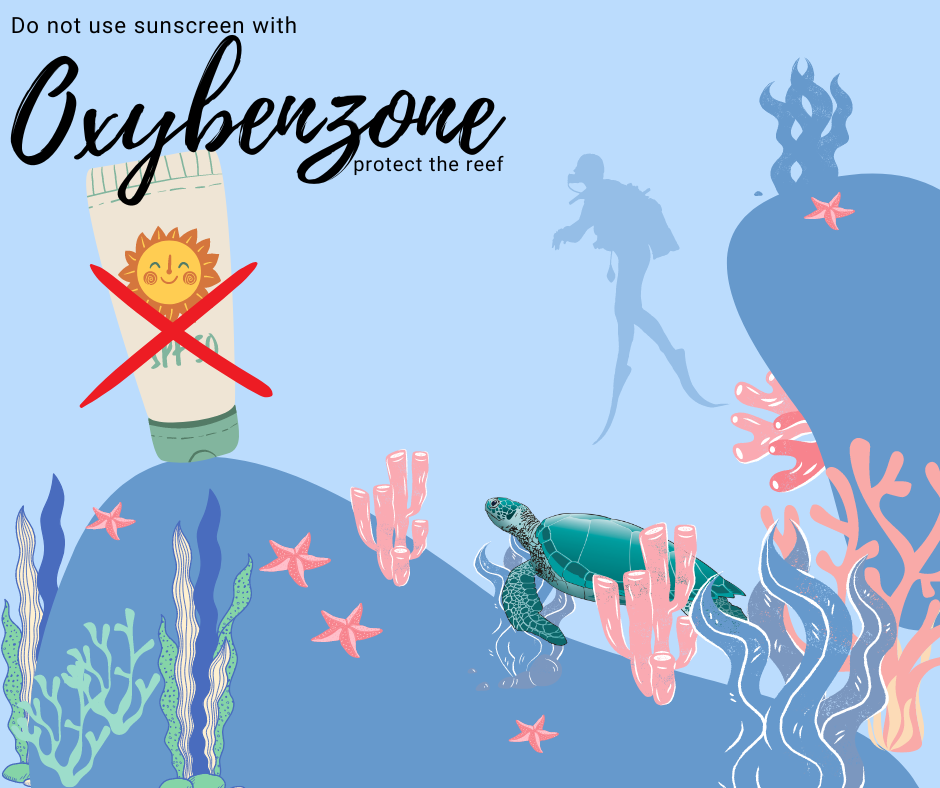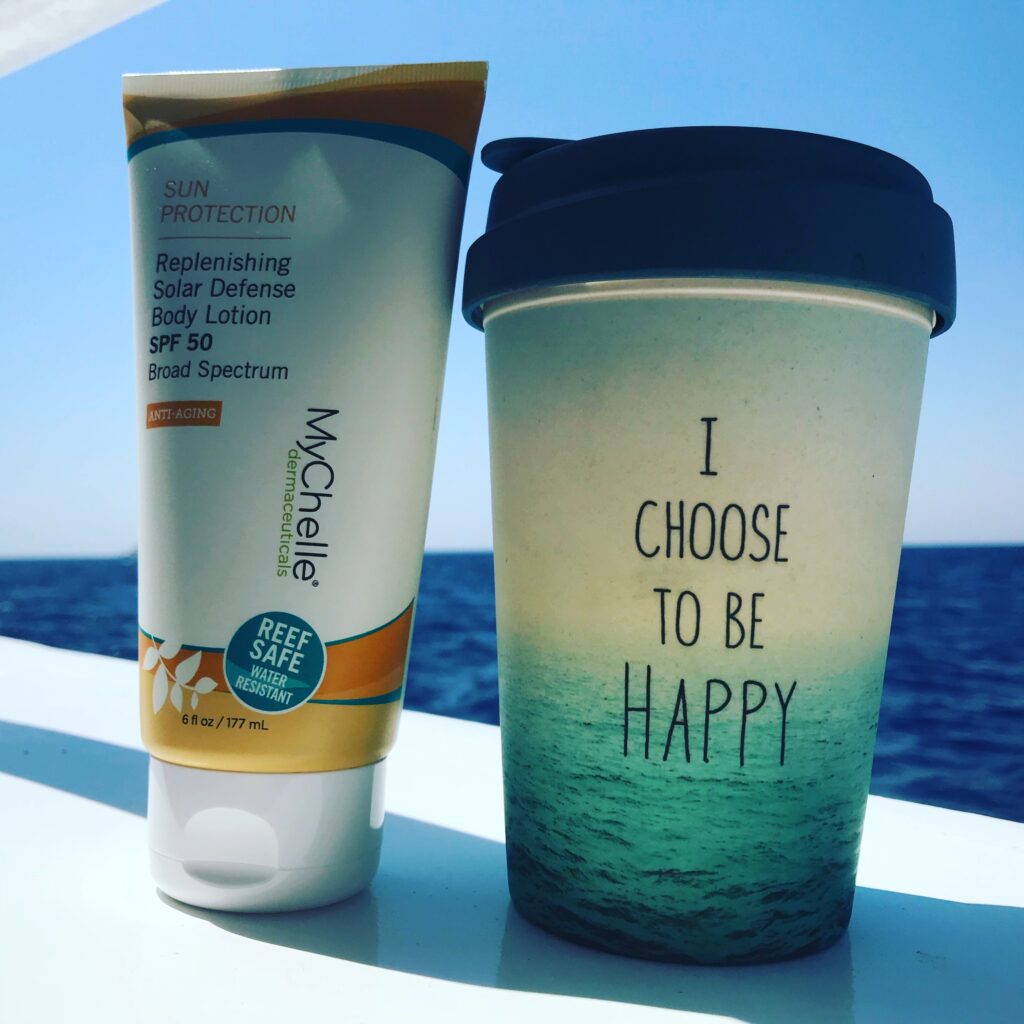For years scientists are discussing and making research about sunscreen use and its impact on the health of coral reefs.
As a Diving Instructor, I feel important to raise this topic in my blog, to spread the information, to share my knowledge, and allow making a sustainable choice to those who will read this article.

Corals are animals and almost every diver knows about them. Corals are living in symbiosis with tiny algae called zooxanthellae. Tiny plant-like organisms live in a safe place within healthy coral tissue, and they also get to use the coral’s waste products as nutrients to power photosynthesis. The corals, in turn, receive energy in the form of sugars as products of the zooxanthellae’s photosynthesis, providing close to 90% of their energy.
So far so good and it is impressive how nature is perfectly created something which works so well.
Coral reefs are important for many different reasons aside from supposedly containing the most diverse ecosystems on the planet. They:
- protect coastlines from the damaging effects of wave action and tropical storms
- provide habitats and shelter for many marine organisms
- are the source of nitrogen and other essential nutrients for marine food chains
- assist in carbon and nitrogen fixing
- help with nutrient recycling.
- the fishing industry depends on coral reefs because many fish spawn there and juvenile fish spend time there before making their way to the open sea
- just a Great Barrier Reef alone generates more than 1.5 billion dollars every year for the Australian economy, from fishing and tourism
Unfortunately, there are many global and local threats to the health and sustainability of coral reefs, Let’s talk about it in a different article. But in this one, I would like to talk about a very specific one.
So where is the issue? For years scientists are concerned about coral bleaching. One of the reasons for coral bleaching that each of us can influence by making a wise choice – is sunscreen protection use.
Sunscreen can enter the ocean indirectly through wastewater systems when it is washed off and from swimmers and divers or directly if the sunscreen comes off people when in the ocean.
The main reason for that, the key ingredients of the sunscreen which are Oxybenzone and Octinoxate. Additionally, look out for Benzophenone-1, Benzophenone-8, OD-PABA, 4-Methyl benzylidene camphor, 3-Benzylidene camphor, and Octocrylene.
Some facts:
- Oxybenzone and octinoxate are used in 70-80% of sunscreens. Sunscreen washes off when you swim or shower and can end up in the oceans.
- Oxybenzone and octinoxate harm reefs by increasing a coral’s susceptibility to bleaching. Damaging coral DNA which interferes with reproduction. Causing deformities and growth anomalies.
- more than 14,000 TONS of sunscreen end up in the ocean each year. There is an estimate that 90% of snorkeling and diving tourism is concentrated on 10% of the world’s coral reefs, meaning that popular reefs are especially vulnerable to sunscreen exposure.
- 82,000 chemicals from personal-care products (shampoo, conditioner, etc) may be tainting the seas; about 80 percent of corals just in the Caribbean have been lost in the last 50 years due to pollution, coastal development, and warming waters.
- combined local and global pressures will push 90 percent of coral reefs to threatened status in less than 10 years (by 2030) and nearly all reefs will be threatened by 2050, one of the reasons for pollution and sunscreen use.
- Just one drop of oxybenzone in 6.5 Olympic swimming pools can induce coral stress.
- In addition to the harm caused to coral, sunscreen can decrease fertility in fish; accumulate in dolphins; damage the immune systems of sea urchins and deform their young, and impair photosynthesis in algae.
But it’s not only chemical sunscreens that are harmful. Mineral sunscreens sometimes contain nano-particles that are so small that they can be absorbed by marine life. These minerals are toxic to many ocean species and can cause stress and ultimately death, even at low concentrations. The safest sunscreen is biodegradable and made from minerals, instead of chemicals. We recommend using brands with non-nano Titanium Dioxide or Zinc Oxide as the active ingredient. “Non-nano” sunscreen is made up of particles larger than 100 nanometers in diameter and is safer for marine life than “nano” sunscreen, containing particles smaller than 100 nanometers.

How you can help:
- read the label of the sunscreen
- chose those without oxybenzone and octinoxate (see the complete list above)
- avoid aerosol sunscreen. Most spray sunscreens contain harmful nanoparticles that stick to the sand and wash into the sea
- use hats, a long sleeve shirts
- avoid being in the sun, especially between 10 a.m. and 4 p.m., when UV rays are strongest
- while diving do not use any sunscreens and do not touch any corals/underwater life
Thailand has banned sunscreens containing chemicals that damage coral from all of its marine national parks. Similar bans have been introduced by the Pacific island of Palau and the US state of Hawaii.
I hope that Egypt will make some efforts in this direction as well in the close future.
We have to remember harmful sunscreen ingredients are just one piece of the puzzle when it comes to saving coral reefs.
- Become an advocate for the environment, talk to your kids, friends, and colleagues – spread information about global and local threats.
- Donate to the underwater clean-ups that we organize in the local dive sites of the Red Sea
- Support the development of sustainable approaches in diving activities
- Share this article, spread the knowledge, and raise awareness.